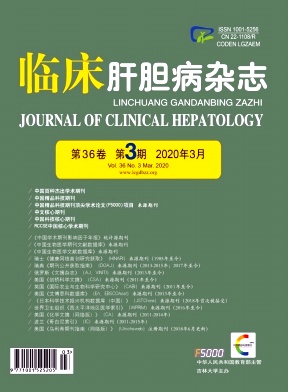|
[1] YU YC,MAO YM,CHEN CW,et al. CSH guidelines for the diagnosis and treatment of drug-induced liver injury[J]. Hepatol Int,2017,11(3):221-241.
|
|
[2] XIAO XH,TANG JY,MAO YM,et al. Guidance for the clinical evaluation of traditional Chinese medicine-induced liver injury[J]. Acta Pharm Sin B,2019,9(3):648-658.
|
|
[3] ZHOU Y,YANG L,LIAO Z,et al. Epidemiology of drug-induced liver injury in China:A systematic analysis of the Chinese literature including 21,789 patients[J]. Eur J Gastroenterol Hepatol,2013,25(7):825-829.
|
|
[4] SHEN T,LIU Y,SHANG J,et al. Incidence and etiology of drug-induced liver injury in mainland China[J]. Gastroenterology,2019,156(8):2230-2241. e11.
|
|
[5] CHEN M,SUZUKI A,BORLAK J,et al. Drug-induced liver injury:Interactions between drug properties and host factors[J]. J Hepatol,2015,63(2):503-514.
|
|
[6] HOOFNAGLE JH,BJÖRNSSON ES. Drug-induced liver injury-Type and phenotypes[J]. N Engl J Med,2019,381(3):264-273.
|
|
[7] STINE JG,CHALASANI N. Chronic liver injury induced by drugs:A systematic review[J]. Liver Int,2015,35(11):2343-2353.
|
|
[8] European Association for the Study of the Liver. EASL clinical practice guidelines:Drug-induced liver injury[J]. J Hepatol,2019,70(6):1222-1261.
|
|
[9] KWO PY,COHEN SM,LIM JK. ACG clinical guideline:Evaluation of abnormal liver chemistries[J]. Am J Gastroenterol,2017,112(1):18-35.
|
|
[10] U. S. Department of Health and Human Services FDA,Center for Drug Evaluation and Research(CDER),Center for Biologics Evaluation and Research(CBER). Guidance for Industry.Drug-Induced Liver Injury:Premarketing Clinical Evaluation[EB/OL].(2009). https://www. fda. gov/downloads/Guidances/UCM174090. pdf.
|
|
[11] Chinese Medical Association of Chinese Society for Tuberculosis. Guidelines for the diagnosis and treatment of antituberculotic drug-induced liver injury[J]. Chin J Tuberc Respir Dis,2019,42(5):343-356.(in Chinese)中华医学会结核病学分会.抗结核药物性肝损伤诊治指南(2019年版)[J].中华结核和呼吸杂志,2019,42(5):343-356.
|
|
[12] CHALASANI N,BONKOVSKY HL,FONTANA R,et al. Features and outcomes of 899 patients with drug-induced liver injury:The DILIN prospective study[J]. Gastroenterology,2015,148(7):1340-1352. e7.
|
|
[13] FONTANA RJ,HAYASHI PH,GU J,et al. Idiosyncratic drug-induced liver injury is associated with substantial morbidity and mortality within 6 months from onset[J]. Gastroenterology,2014,147(1):96-108. e4.
|
|
[14] JEONG R,LEE YS,SOHN C,et al. Model for end-stage liver disease score as a predictor of short-term outcome in patients with drug-induced liver injury[J]. Scand J Gastroenterol,2015,50(4):439-446.
|
|
[15] ROBLES-DIAZ M,LUCENA MI,KAPLOWITZ N,et al. Use of Hy's law and a new composite algorithm to predict acute liver failure in patients with drug-induced liver injury[J]. Gastroenterology,2014,147(1):109-118. e5.
|
|
[16] MEDINA-CALIZ I,ROBLES-DIAZ M,GARCIA-MUÑOZ B,et al. Definition and risk factors for chronicity following acute idiosyncratic drug-induced liver injury[J]. J Hepatol,2016,65(3):532-542.
|
|
[17] ZHU Y,NIU M,CHEN J,et al. Hepatobiliary and pancreatic:Comparison between Chinese herbal medicine and Western medicine-induced liver injury of 1985 patients[J]. J Gastroenterol Hepatol,2016,31(8):1476-1482.
|
|
[18] JING J,WANG R,ZHAO X,et al. Association between the concurrence of pre-existing chronic liver disease and worse prognosis in patients with an herb-Polygonum multiflorum thunb. induced liver injury:A case-control study from a specialised liver disease center in China[J]. BMJ Open,2019.[Epub ahead of print]
|
|
[19] LO RS,KRISHNAMOORTHY R,FREEMAN JG,et al. Cholestasis and biliary dilatation associated with chronic ketamine abuse:A case series[J]. Singapore Med J,2011,52(3):e52-e55.
|
|
[20] SCHWAB GP,WETSCHER GJ,VOGL W,et al. Methimazole-induced cholestatic liver injury,mimicking sclerosing cholangitis[J]. Langenbecks Arch Chir,1996,381(4):225-227.
|
|
[21] HORSLEY-SILVA JL,DOW EN,MENIAS CO,et al. Docetaxel induced sclerosing cholangitis[J]. Dig Dis Sci,2015,60(12):3814-3816.
|
|
[22] LIN G,WANG JY,LI N,et al. Hepatic sinusoidal obstruction syndrome associated with consumption of Gynura segetum[J]. J Hepatol,2011,54(4):666-673.
|
|
[23] Cooperative Group for Hepatic and Gall Diseases,Chinese Society of Gastroenterology, Chinese Medical Association.Expert consensus on diagnosis and treatment of quinazoline alkaloids-related sinusoidal obstruction syndrome(2017,Nanjing)[J]. J Clin Hepatol,2017,33(9):1627-1637.(in Chinese)中华医学会消化病学分会肝胆疾病协作组.吡咯生物碱相关肝窦阻塞综合征诊断和治疗专家共识意见(2017年,南京)[J].临床肝胆病杂志,2017,33(9):1627-1637.
|
|
[24] STINE JG,NORTHUP PG. Autoimmune-like drug-induced liver injury:A review and update for the clinician[J]. Expert Opin Drug Metab Toxicol,2016,12(11):1291-1301.
|
|
[25] KLEINER DE,CHALASANI NP,LEE WM,et al. Hepatic histological findings in suspected drug-induced liver injury:systematic evaluation and clinical associations[J]. Hepatology,2014,59(2):661-670.
|
|
[26] KLEINER DE. Drug-induced Liver Injury:The hepatic pathologist's approach[J]. Gastroenterol Clin North Am,2017,46(2):273-296.
|
|
[27] KULLAK-UBLICK GA,ANDRADE RJ,MERZ M,et al. Drug-induced liver injury:Recent advances in diagnosis and risk assessment[J]. Gut,2017,66(6):1154-1164.
|
|
[28] CLARKE JI,DEAR JW,ANTOINE DJ. Recent advances in biomarkers and therapeutic interventions for hepatic drug safetyfalse dawn or new horizon?[J]. Expert Opin Drug Saf,2016,15(5):625-634.
|
|
[29] LUNDBÄCK P,LEA JD,SOWINSKA A,et al. A novel high mobility group box 1 neutralizing chimeric antibody attenuates drug-induced liver injury and postinjury inflammation in mice[J]. Hepatology,2016,64(5):1699-1710.
|
|
[30] DEAR JW,CLARKE JI,FRANCIS B,et al. Risk stratification after paracetamol overdose using mechanistic biomarkers:Results from two prospective cohort studies[J]. Lancet Gastroenterol Hepatol,2018,3(2):104-113.
|
|
[31] CHURCH R,KULLAK-UBLICK GA,AUBRECHT J,et al.Candidate biomarkers for the diagnosis and prognosis of drug-induced liver injury:An international collaborative effort[J].Hepatology,2019,69(2):760-773.
|
|
[32] ANTOINE DJ,JENKINS RE,DEAR JW,et al. Molecular forms of HMGB1 and keratin-18 as mechanistic biomarkers for mode of cell death and prognosis during clinical acetaminophen hepatotoxicity[J]. J Hepatol,2012,56(5):1070-1079.
|
|
[33] HUEBENER P,PRADERE JP,HERNANDEZ C,et al. The HMGB1/RAGE axis triggers neutrophil-mediated injury amplification fol owing necrosis[J]. J Clin Invest,2015,125(2):539-550.
|
|
[34] ANDERSSON U,LINDBERG J,WANG S,et al. A systems biology approach to understanding elevated serum alanine transaminase levels in a clinical trial with ximelagatran[J]. Biomarkers,2009,14(8):572-586.
|
|
[35] LI C,RAO T,CHEN X,et al. HLA-B*35∶01 allele is a potential biomarker for predicting Polygonum multiflorum-induced liver injury in humans[J]. Hepatology,2019,70(1):346-357.
|
|
[36] NICOLETTI P,AITHAL GP,BJORNSSON ES,et al. Association of liver injury from specific drugs,or groups of drugs,with polymorphisms in HLA and other genes in a genome-wide association study[J]. Gastroenterology,2017,152(5):1078-1089.
|
|
[37] AITHAL GP. Pharmacogenetic testing in idiosyncratic druginduced liver injury:Current role in clinical practice[J]. Liver Int,2015,35(7):1801-1808.
|
|
[38] GROVE JI,AITHAL GP. Human leukocyte antigen genetic risk factors of drug-induced liver toxicology[J]. Expert Opin Drug Metab Toxicol,2015,11(3):395-409.
|
|
[39] ZHANG L,NIU M,WEI AW,et al. Risk profiling using metabolomic characteristics for susceptible individuals of drug-induced liver injury caused by Polygonum multiflorum[J]. Arch Toxicol,2019.[Epub ahead of print]
|
|
[40] WANG JB,ZHU Y,BAI ZF,et al. Guidelines for the diagnosis and management of herb-induced liver injury[J]. Chin J Integr Med,2018,24(9):696-706.
|







 DownLoad:
DownLoad: